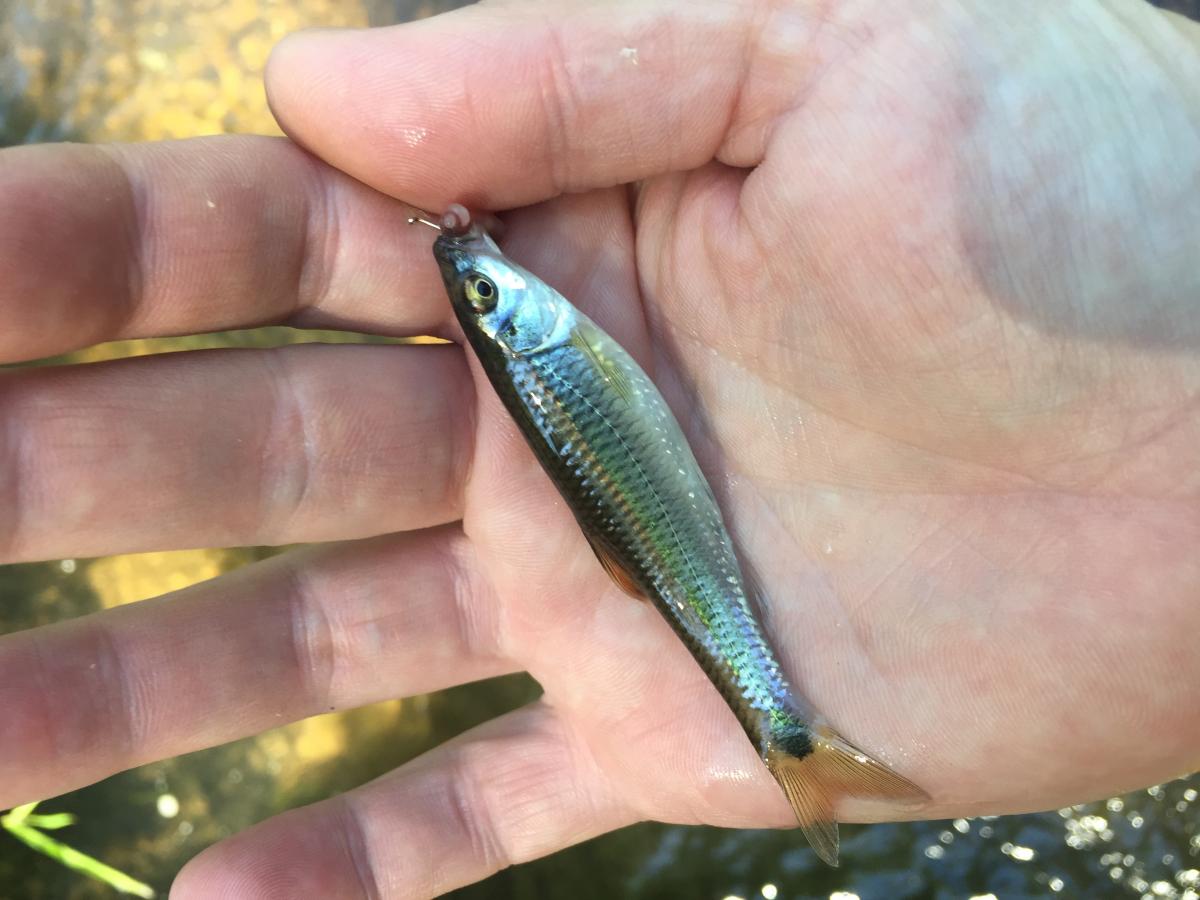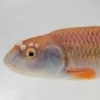Cyprinella ID, Coosa River basin AL
#4

Posted 09 May 2017 - 03:08 PM
Here's a great tool to see what species you may be finding.
www.fishmap.org
Based on that location, I'd say Blacktail Shiner, Cyprinella venusta.
Cyprinella make great aquarium fish.
Josh Blaylock - Central KY
NANFA on Facebook
KYCREEKS - KRWW - KWA
I hope to have God on my side, but I must have Kentucky.
- Abraham Lincoln, 1861
#6

Posted 10 May 2017 - 06:19 AM
No idea, Alabama fish aren't my thing. Just throwing a guess out there.Josh -- What distinguishes that fish as a Blacktail and not an Alabama shiner?
Sent from my Nexus 5 using Tapatalk
Josh Blaylock - Central KY
NANFA on Facebook
KYCREEKS - KRWW - KWA
I hope to have God on my side, but I must have Kentucky.
- Abraham Lincoln, 1861
#9

Posted 11 May 2017 - 08:06 AM
I've never seen either of these in person. I looked at the Peterson's guide, and based on the descriptions of both fish, it seems it would be hard to distinguish the 2 apart as they have similar description.
Josh Blaylock - Central KY
NANFA on Facebook
KYCREEKS - KRWW - KWA
I hope to have God on my side, but I must have Kentucky.
- Abraham Lincoln, 1861
#10

Posted 11 May 2017 - 11:14 AM
I changed the topic title -- that might draw more GA/AL folks who know the Coosa basin species.
Good topic titles give better responses!
Gerald Pottern
-----------------------
Hangin' on the Neuse
"Taxonomy is the diaper used to organize the mess of evolution into discrete packages" - M.Sandel
#12

Posted 11 May 2017 - 12:57 PM
I have looked at this thing a ton. I know it's silly but I wish the photo was better and that it was properly oriented. I had decided that I thought it was venusta based on the spot, but now I am fairly certain that it is callistia. The reddish iridescence on the flank of the fish above the lateral line and the orangish colored fins are what make me think that. It also appears that the fish is more cylindrical than compressed. Venusta rarely get color in their fins except for during spawning and then their fins typically turn yellow and white. A non-breeding fish typically has little to no fin coloration though I suppose that could be dependent on habitat, water clarity and other factors. Venusta are typically laterally compressed like a typical shiner while callistia are more barrel shaped, more akin to a Nocomis without obviously going that far. The caudal spot is tricky since venusta is so wide ranging, the position and size can vary slightly. It does appear that the caudal spot bleeds into a couple rays into the caudal fin on venusta while it typically does not bleed into the caudal fin on callistia.
For the OP, if you are finding venusta and/or callistia, you are looking in the wrong place. Both of these fish are typically found in larger streams than rainbows.
Dustin Smith
At the convergence of the Broad, Saluda and Congaree
Lexington, SC
#13

Posted 11 May 2017 - 01:07 PM
wow I really like that answer... because it agrees with me (sarcastic giggle).
I will say, that I know at least one spot in North Georgia where there are tricolors, alabamas, coosa, and rainbow shiners all in the same stretch of water.
http://gallery.nanfa.../Reinhardt2016/
#14

Posted 11 May 2017 - 03:28 PM
wow I really like that answer... because it agrees with me (sarcastic giggle).
I will say, that I know at least one spot in North Georgia where there are tricolors, alabamas, coosa, and rainbow shiners all in the same stretch of water.
I wonder if there is a smaller stream feeding into the stream where you typically collect. It is certainly possible, but it seems as though rainbows are typically found in smaller streams.
Dustin Smith
At the convergence of the Broad, Saluda and Congaree
Lexington, SC
#15

Posted 11 May 2017 - 04:01 PM
I have looked at this thing a ton. I know it's silly but I wish the photo was better and that it was properly oriented. I had decided that I thought it was venusta based on the spot, but now I am fairly certain that it is callistia. The reddish iridescence on the flank of the fish above the lateral line and the orangish colored fins are what make me think that. It also appears that the fish is more cylindrical than compressed. Venusta rarely get color in their fins except for during spawning and then their fins typically turn yellow and white. A non-breeding fish typically has little to no fin coloration though I suppose that could be dependent on habitat, water clarity and other factors. Venusta are typically laterally compressed like a typical shiner while callistia are more barrel shaped, more akin to a Nocomis without obviously going that far. The caudal spot is tricky since venusta is so wide ranging, the position and size can vary slightly. It does appear that the caudal spot bleeds into a couple rays into the caudal fin on venusta while it typically does not bleed into the caudal fin on callistia.
For the OP, if you are finding venusta and/or callistia, you are looking in the wrong place. Both of these fish are typically found in larger streams than rainbows.
All of this is why field experience is so great for ID'ing fish. All of these little things you won't find in most ID books.
Josh Blaylock - Central KY
NANFA on Facebook
KYCREEKS - KRWW - KWA
I hope to have God on my side, but I must have Kentucky.
- Abraham Lincoln, 1861
#16

Posted 11 May 2017 - 08:50 PM
I wonder if there is a smaller stream feeding into the stream where you typically collect. It is certainly possible, but it seems as though rainbows are typically found in smaller streams.
You're right D, its actually the other way around... this is a small enough creek to have rainbows and darters and such... but is only a couple hundred yards (like river yards) from the confluence with a larger stream. So if you followed the link, we find smaller shiners and darters and even lamprey in the stream... but also the occasional juv. coosa bass and bullhead and Cyprinella. I just wanted to give the OP some hope that there are places where they cross over. If you followed the link and saw the pictures you will see this is near Reinhardt University (a place I have often reported on).
#17

Posted 12 May 2017 - 08:43 AM
Dustin's description is excellent, and I agree with callistia. I think the shine on the scales are covering up the front portion of the caudal spot, giving us the appearance of that distinct squarish spot of venusta.
As an aside, I was out yesterday in Dawson County, GA and the Nocomis are building nests and the Rainbow shiners are all colored up. Not spawning yet, but already getting on their fancy clothes.
Willie P
#18

Posted 15 May 2017 - 04:09 PM
Reply to this topic
1 user(s) are reading this topic
0 members, 1 guests, 0 anonymous users













